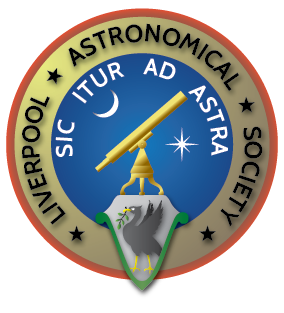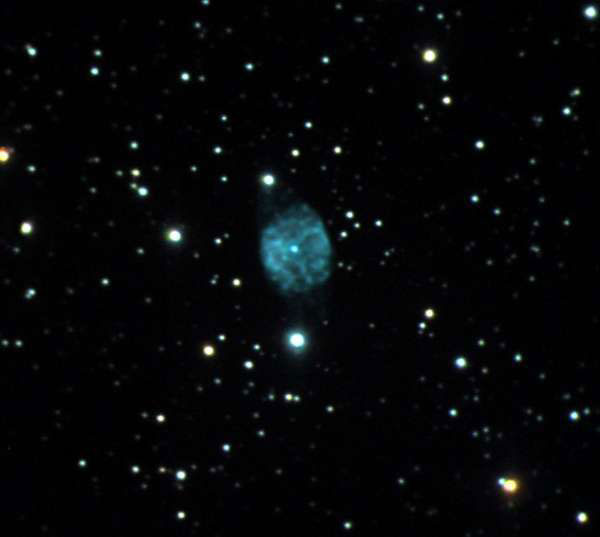The constellation of Delphinus, the Dolphin, reaches its highest point in our skies, due south, at about midnight in the middle of August. Although the individual stars are fairly faint, it is easier to see than the fainter constellation of Vulpecula that lies on its northern border. Although it contains no Messier Objects, it does contain several objects that are well worth searching for in almost any telescope.
The planetary nebula NGC 6905, (RA 20:22 Dec +20:07 epoch 2000), also known as “the Blue Flash Nebula”, is probably best approached from the 5th magnitude star eta Sagitta, only about 4 degrees west of NGC 6905. These days, when I’m using the 16 inch Robertson Reflector, at Pex Hill, I usually rely upon an azimuth ring to judge the distance I need to move the telescope in azimuth. If Delphinus is nearly due south, the difference in altitude will usually be only about 1 degree, or less. As this object is fairly large, compared with a lot of other planetary nebula, it can usually be seen, at low power, as a fuzzy star. Boosting the magnification reveals a distinctly non circular shape that has the peculiar greenish/bluish glow that is a characteristic feature of this type of object.
A slightly easier object to find is the globular star cluster NGC 6934 (RA 20:34 Dec +07:24). This lies about 4 degrees south of the 4th magnitude star epsilon Delphinus. Again, this means that once this star is found
in the Robertson 16 inch Reflector, it is usually a simple matter to lower the telescopes altitude by 4 degrees, using a digital level attached to the telescope. Of course, if Delphinus is a long way from due south, the difference in azimuth between these two objects will start to become much more significant. In a small telescope you may only see a fuzzy blob that is very hard to resolve into stars. However, objects such as this are one of the main reasons why our telescope making group are not satisfied with “small telescopes” – such as the 16 inch at Pex Hill. We have already built two 30 inch telescopes and are currently building three 20 inch telescopes.

